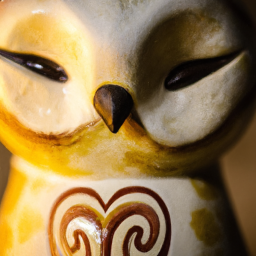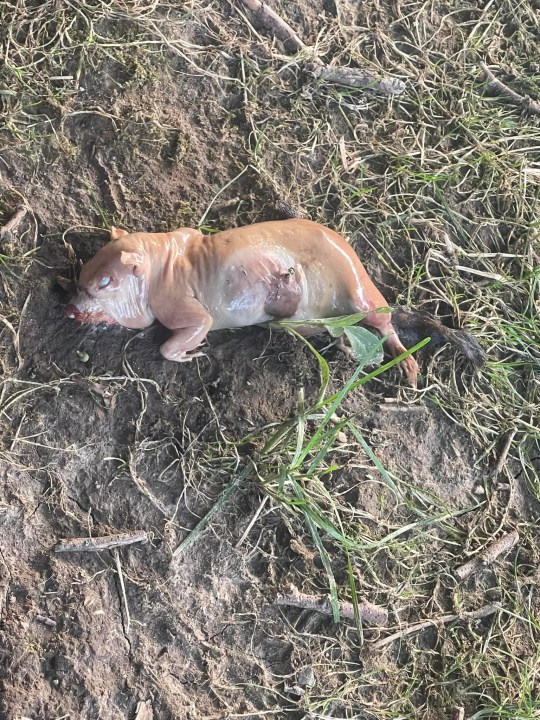
So you’re intrigued by mystery creatures and the enigmatic world of Indiana wildlife? Look no further! “Strange Animals In Indiana” is here to satisfy your curiosity. This fascinating product delves into the peculiar realm of bizarre animals that inhabit the state of Indiana. From mythical beasts to cryptids and urban legends, this compilation of strange animals will leave you awe-inspired and eager to explore the hidden corners of Indiana’s wilderness. With gripping tales and captivating photographs, “Strange Animals In Indiana” is the ultimate guide to the extraordinary fauna that call this mysterious state their home.

Indiana’s Ecological Diversity
Indiana is home to a rich and diverse array of wildlife, thanks in large part to its unique geographical influences and various types of habitats. This state, located in the heart of the Midwest, is characterized by its rolling hills, flat plains, forests, and rivers, which provide a wide range of habitats for the numerous species that call Indiana home.
Geographical influences on wildlife
The geographical features of Indiana have a significant impact on its wildlife population. The state is known for its diverse topography, which includes the Great Lakes Plains, the Central Till Plain, and the Southern Hills and Lowlands. Each of these regions offers different habitats and resources for various species.
For example, the Great Lakes Plains region in the northern part of the state is characterized by fertile farmland and a network of rivers and streams. This area provides rich feeding grounds for waterfowl and supports a diverse bird population.
In contrast, the Southern Hills and Lowlands region is marked by rugged hills, dense forests, and limestone caves. These unique features create ideal habitats for a wide range of mammals, reptiles, and amphibians. The diverse topography of Indiana creates a tapestry of habitats that support an abundance of wildlife.
Types of habitats in Indiana
Indiana boasts a vast assortment of habitats, each supporting different species and ecosystems. From vast forests to wetlands and grasslands, this state offers a diverse range of environments for its wildlife.
Forests cover approximately 20% of Indiana’s land, providing shelter and food for various mammals, birds, and insects. These forests are home to species such as the Eastern Mole, American Badger, and numerous bird species like the Barn Owl, which thrive in the woodland habitat.
Wetlands are another crucial habitat in Indiana, supporting a myriad of amphibians and reptiles. The Hellbender, North America’s largest salamander, can be found here, along with the Eastern Tiger Salamander, the official state amphibian.
Grasslands and prairies, once vast in Indiana, have become rare due to urbanization and agricultural development. However, efforts are underway to protect and restore these unique habitats, which support species like the Sandhill Crane, a tall bird known for its distinctive call.
Interesting Mammals of Indiana
Indiana Bat: An Endangered Species
One of the most fascinating mammals in Indiana is the Indiana Bat (Myotis sodalis), which also happens to be an endangered species. This small, insect-eating bat plays a crucial role in maintaining the balance of ecosystems by helping control insect populations. They are also known for their impressive migratory abilities, traveling long distances between summer roosting sites and hibernation caves.
Eastern Mole: The burrowing mammal
The Eastern Mole (Scalopus aquaticus) is a small mammal found throughout Indiana. These skilled burrowers create complex tunnel systems underground, where they search for worms, insects, and plant roots. Despite spending most of their lives underground, their presence can often be observed through the telltale signs of their molehills dotting the landscape.
American Badger: The Solitary Predator
The American Badger (Taxidea taxus) is a solitary and elusive predator that calls Indiana home. With their distinctive black and white facial markings and powerful build, they are known for their digging abilities. They use their sharp claws to excavate burrows where they live and raise their young. While they primarily eat small mammals, they also consume insects, reptiles, and birds.
Unique Amphibians of Indiana
The Hellbender: North America’s Giant Salamander
The Hellbender (Cryptobranchus alleganiensis) is an incredible aquatic creature that can be found in Indiana’s rivers and streams. As North America’s largest fully aquatic salamander, the Hellbender can reach impressive sizes, with some individuals exceeding two feet in length. They are known for their flattened bodies, wrinkled skin, and the ability to breathe through their skin, allowing them to thrive in oxygen-rich water.
Eastern Tiger Salamander: The State Amphibian
The Eastern Tiger Salamander (Ambystoma tigrinum) is a species of salamander that holds the prestigious title of being the official state amphibian of Indiana. These amphibians are known for their striking yellow and black markings, resembling the pattern of a tiger. They live in various habitats, including wetlands and forests, and undergo a fascinating metamorphosis, starting as aquatic larvae before transitioning to life on land.
Illustrious Insects in Indiana
Periodical Cicada: The 17-Year Phenomenon
The Periodical Cicada (Magicicada sp.) is one of the most intriguing insects found in Indiana. These unique creatures have one of the longest life cycles of any insect, spending the majority of their lives underground before emerging in massive numbers every 17 years. This phenomenon, known as a “brood emergence,” captivates both scientists and residents alike, creating a symphony of sound as the males sing to attract mates.
American Burying Beetle: The Endangered Insect
The American Burying Beetle (Nicrophorus americanus) is an endangered species of beetle that plays a vital role in Indiana’s ecosystem. These beetles are exceptional recyclers, as they bury and feed on small vertebrate carcasses, such as birds and rodents. Unfortunately, habitat loss and other factors have contributed to their decline, highlighting the importance of conservation efforts to protect these beneficial insects.

Distinctive Birds in Indiana
Sandhill Crane: The Tall Bird
The Sandhill Crane (Antigone canadensis) is a majestic bird that stands tall in Indiana’s wetlands and prairies. With their long legs, elegant gray plumage, and distinctive red crown, they are a sight to behold. These birds are known for their unique mating dances and loud bugling calls that echo through the skies. Indiana provides critical stopover habitat for Sandhill Cranes during their annual migration, as they travel between their summer breeding grounds in the north and their wintering sites in the south.
Barn Owl: The Night Hunter
The Barn Owl (Tyto alba) is a nocturnal bird of prey that is well-known for its ghostly appearance and silent flight. These owls are perfectly adapted for hunting in the dark, with specialized feathers that allow them to fly silently, giving them a distinct advantage when it comes to surprising their small mammal prey. Despite their name, Barn Owls can be found in a variety of habitats, including grasslands, farmlands, and woodlands, where they nest in tree cavities and abandoned buildings.
Invasive Species in Indiana
Asian Carp: The Uninvited Fish
The Asian Carp (Hypophthalmichthys spp.) is an unwelcome invasive species that has made its way into Indiana’s rivers and threatens the delicate balance of aquatic ecosystems. Originally introduced to the United States for aquaculture purposes, these large and prolific fish have rapidly spread throughout the Mississippi River Basin. Known for their ability to outcompete native species for resources, they pose a significant threat to the biodiversity of Indiana’s waterways.
Emerald Ash Borer: The Tree Killer
The Emerald Ash Borer (Agrilus planipennis) is a small but destructive beetle that has caused widespread damage to Indiana’s ash trees. Originally from Asia, this invasive species has no natural predators in the United States, allowing it to rapidly multiply and spread. The larvae of the Emerald Ash Borer tunnel beneath the bark of ash trees, disrupting the tree’s ability to transport water and nutrients, ultimately leading to the death of the infected trees.

Endangered Species in Indiana
Indiana Bat: The Declining Population
The Indiana Bat (Myotis sodalis), previously mentioned as an interesting mammal of Indiana, is sadly facing a declining population. As an endangered species, this bat is particularly vulnerable to habitat loss, disturbance during hibernation, and the effects of climate change. Conservation efforts are underway to protect and restore their habitats, raise awareness, and implement measures to ensure their survival.
Eastern Massasauga: The Threatened Rattlesnake
The Eastern Massasauga (Sistrurus catenatus catenatus) is a threatened species of rattlesnake that can be found in Indiana’s wetland habitats. With their distinctive rattles and attractive pattern, these venomous snakes are an important part of the ecosystem, helping control rodent populations. Unfortunately, habitat destruction and fragmentation, along with illegal collection, have led to a decline in their numbers, underscoring the need for conservation efforts to preserve this unique snake species.
Rare Reptiles in Indiana
Eastern Box Turtle: The State Reptile
The Eastern Box Turtle (Terrapene carolina) holds the honor of being the official state reptile of Indiana. These turtles can be found in a variety of habitats, including woodlands and grasslands. Known for their distinctive domed shell and ability to retract their head and limbs for protection, Eastern Box Turtles are slow movers but can live for decades, making them an iconic reptile in Indiana’s wildlife.
Copperbelly Water Snake: The Semi-Aquatic Serpent
The Copperbelly Water Snake (Nerodia erythrogaster neglecta) is a rare and elusive semi-aquatic snake that inhabits Indiana’s wetland areas. As its name suggests, this snake exhibits a bright red or orange belly, distinguishing it from other water snake species. Unfortunately, due to the destruction of wetland habitats and the negative perception that some people have towards snakes, the Copperbelly Water Snake is under threat. Conservation efforts are crucial to protect this unique and essential part of Indiana’s reptile diversity.

Aquatic Life in Indiana
Longnose Gar: The Prehistoric Fish
The Longnose Gar (Lepisosteus osseus) is a fascinating prehistoric fish that can be found in Indiana’s rivers and lakes. With their long, slender bodies, sharp teeth, and distinctive snouts, these fish resemble creatures from a bygone era. Longnose Gars are voracious predators, feeding on smaller fish and using their slender bodies and powerful tails for efficient swimming. Despite their ancient lineage, they continue to thrive in Indiana’s aquatic ecosystems.
Freshwater Mussels: The Filter Feeders
Freshwater mussels are an essential component of Indiana’s aquatic ecosystems. These bivalve mollusks play a vital role in filtering water, improving its quality, and providing habitat for numerous other species. Some of the most notable freshwater mussel species found in Indiana include the Wabash Pigtoe (Fusconaia flava), the Purple Wartyback (Cyclonaias tuberculata), and the Pocketbook (Lampsilis spp.). Unfortunately, many species of freshwater mussels are threatened due to pollution, habitat degradation, and overharvesting, emphasizing the need for conservation efforts.
Indiana Wildlife Conservation Efforts
Reintroduction and Protection Projects
Indiana has implemented various conservation initiatives aimed at protecting and restoring its diverse wildlife populations. These efforts include reintroduction programs for endangered species, such as the Indiana Bat and the Eastern Massasauga. By carefully managing habitats, monitoring populations, and raising awareness, conservationists hope to reverse population declines and ensure the long-term survival of these species.
Public Education and Awareness Campaigns
A crucial component of wildlife conservation in Indiana involves educating the public about the importance of protecting and preserving the state’s unique ecosystems. Public education and awareness campaigns aim to foster a connection between individuals and their local wildlife, sparking a sense of stewardship and inspiring action. By engaging communities and promoting sustainable practices, Indiana can work towards a future in which its diverse wildlife can thrive alongside its human residents.
In conclusion, Indiana’s ecological diversity is a testament to the diverse geographical influences and habitats found within the state. From the endangered Indiana Bat to the unique Eastern Box Turtle, Indiana is home to a remarkable array of wildlife. By recognizing and protecting these species and their habitats, we can ensure that future generations can continue to experience the wonder of Indiana’s remarkable wildlife.






